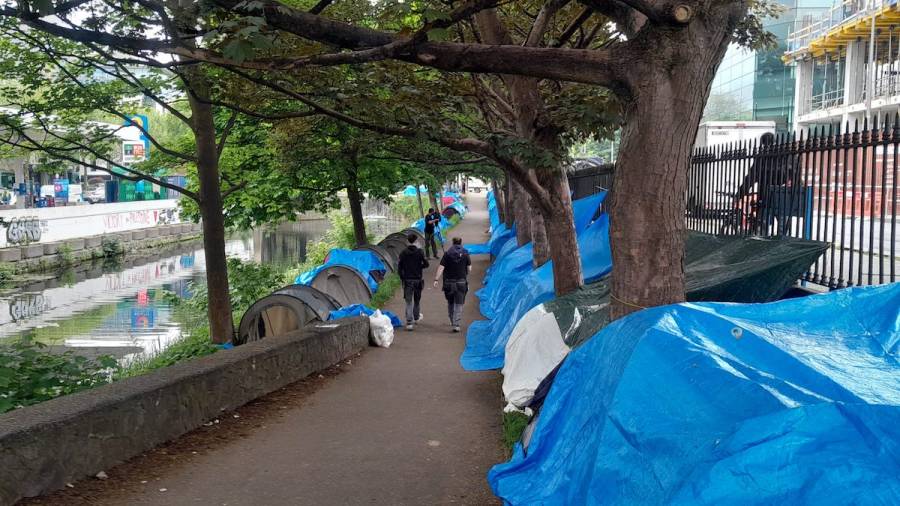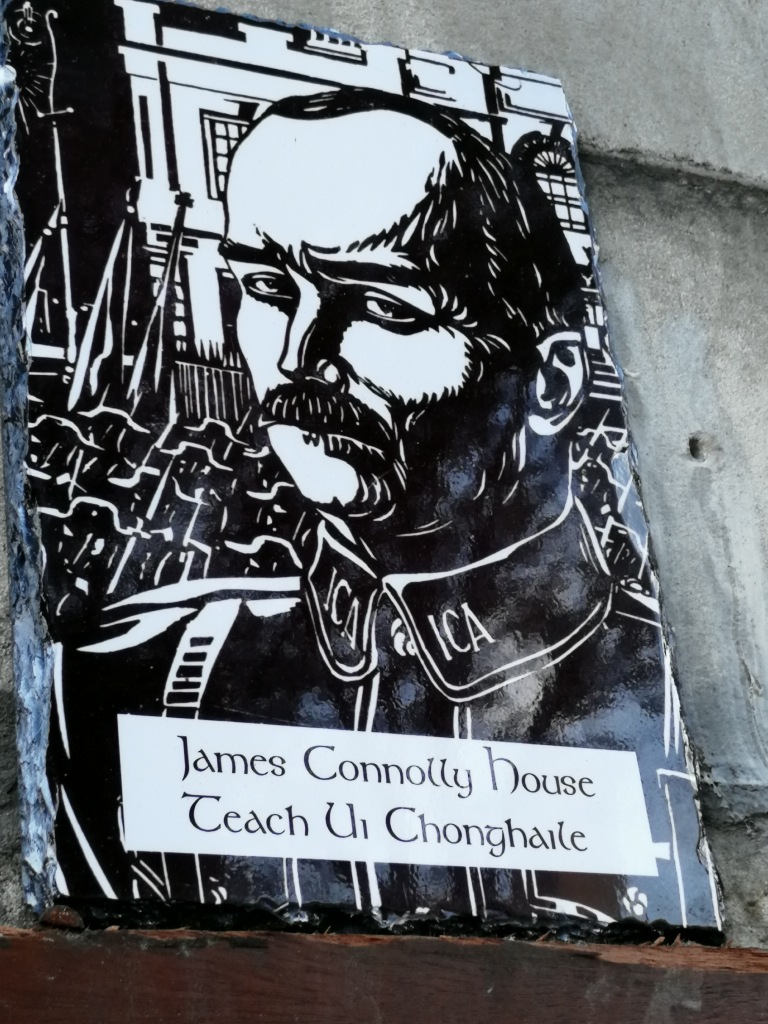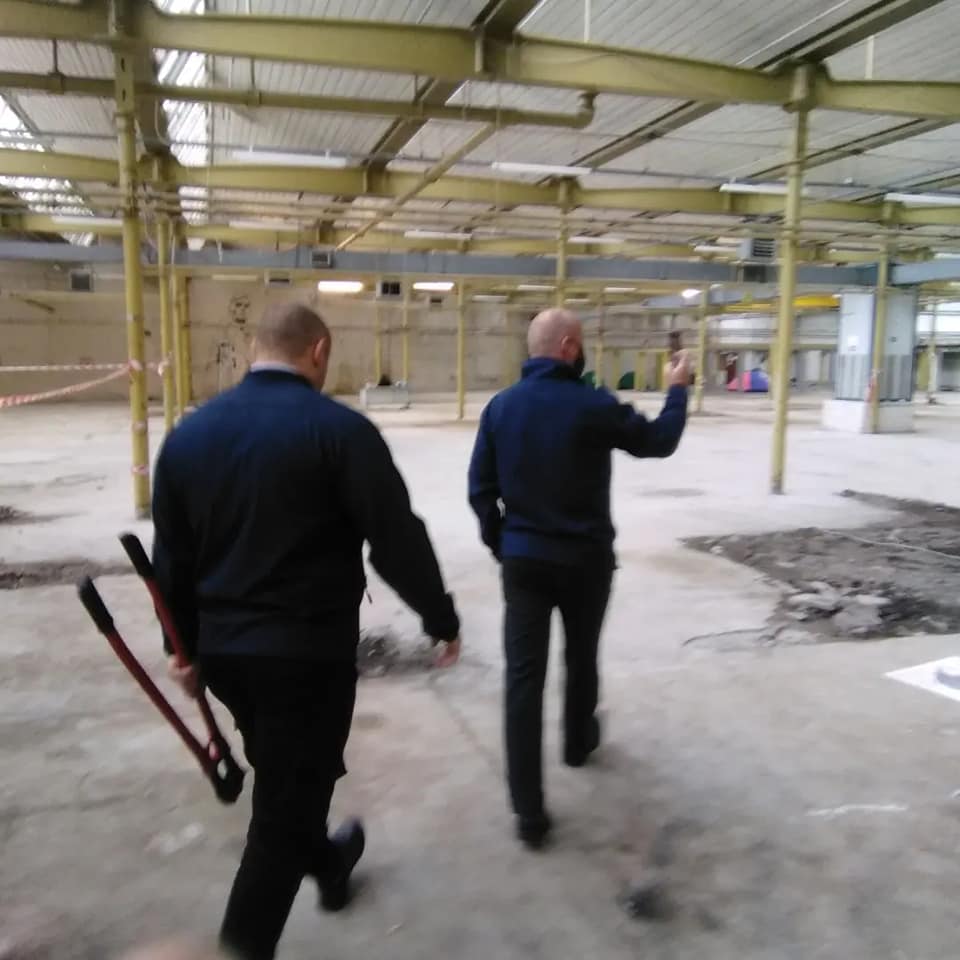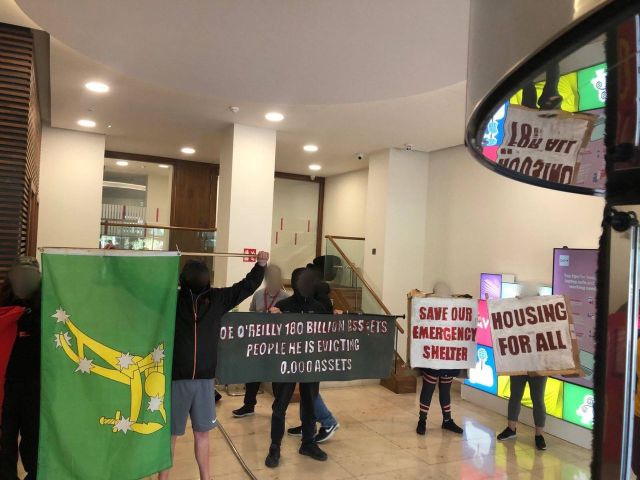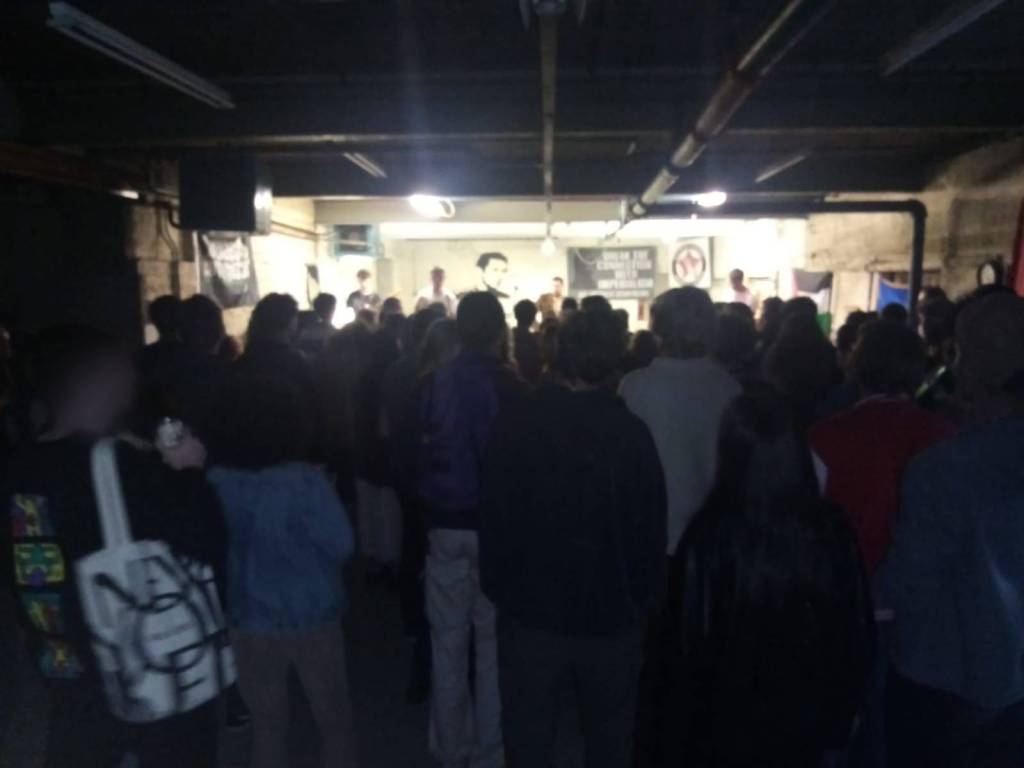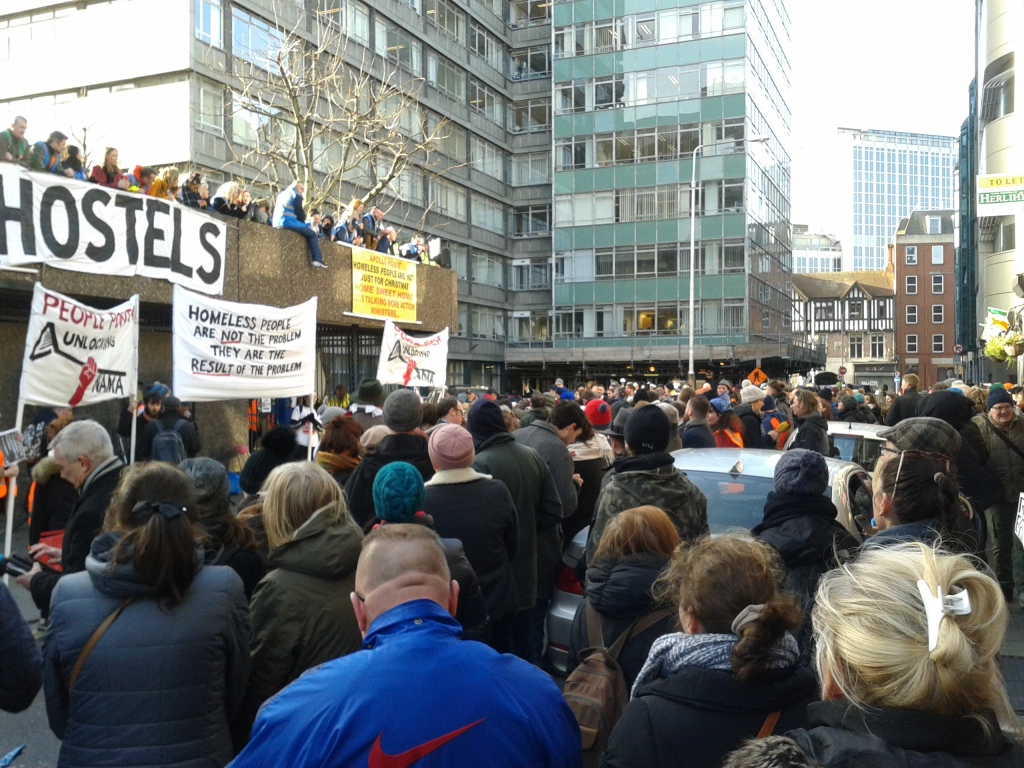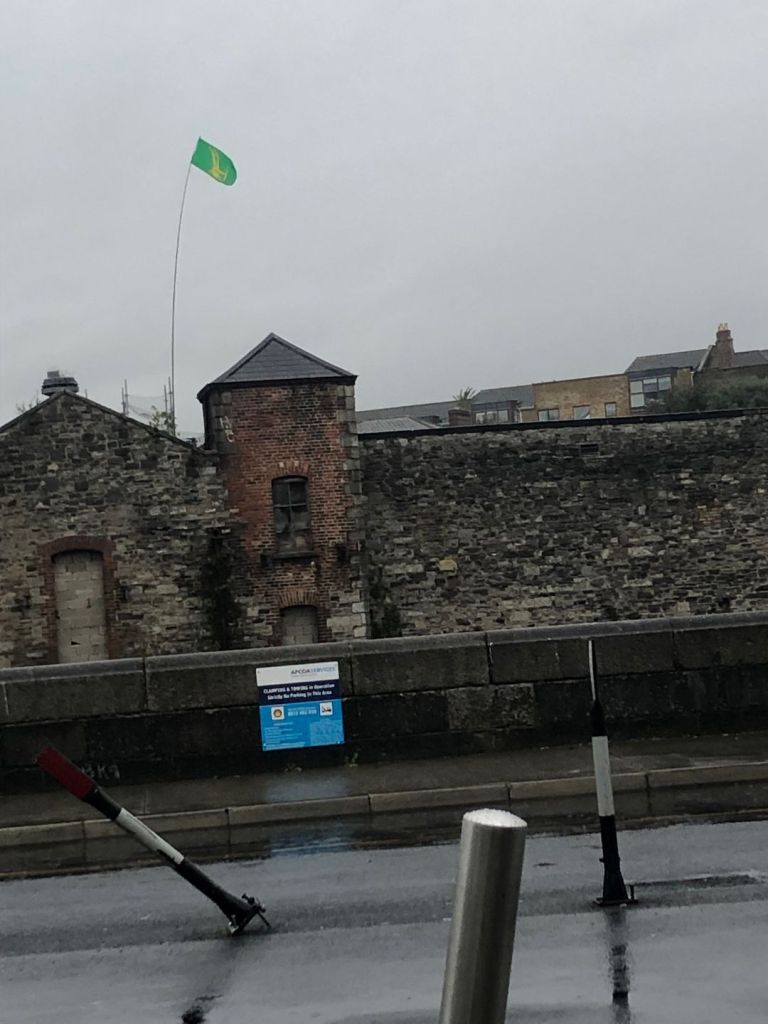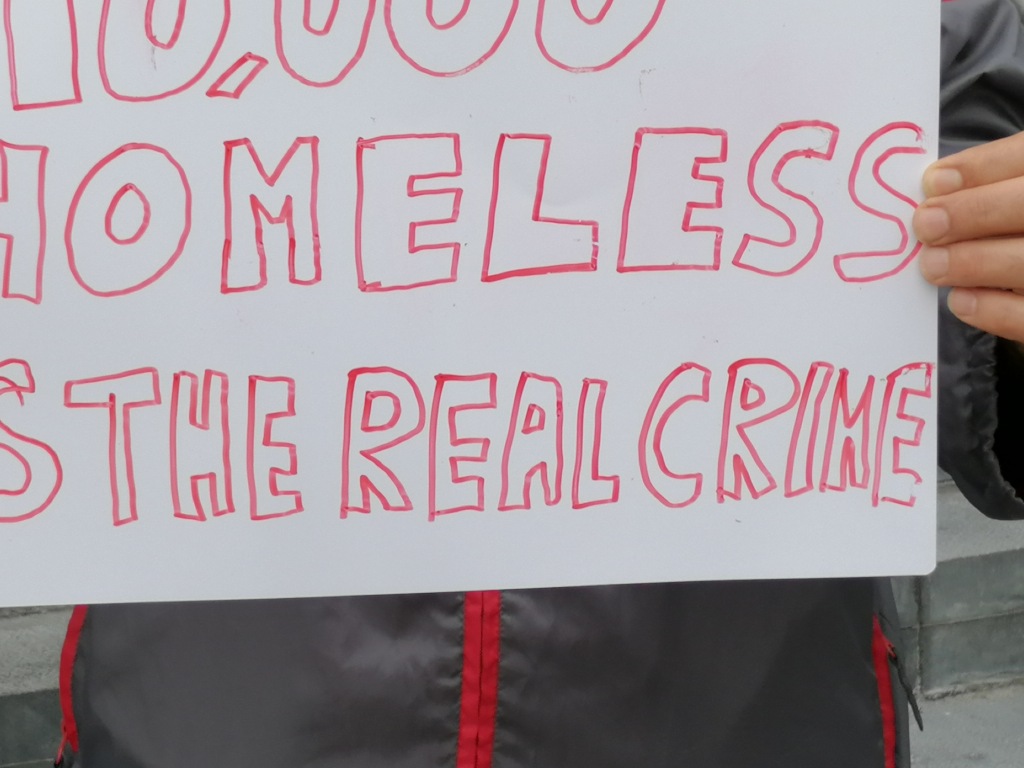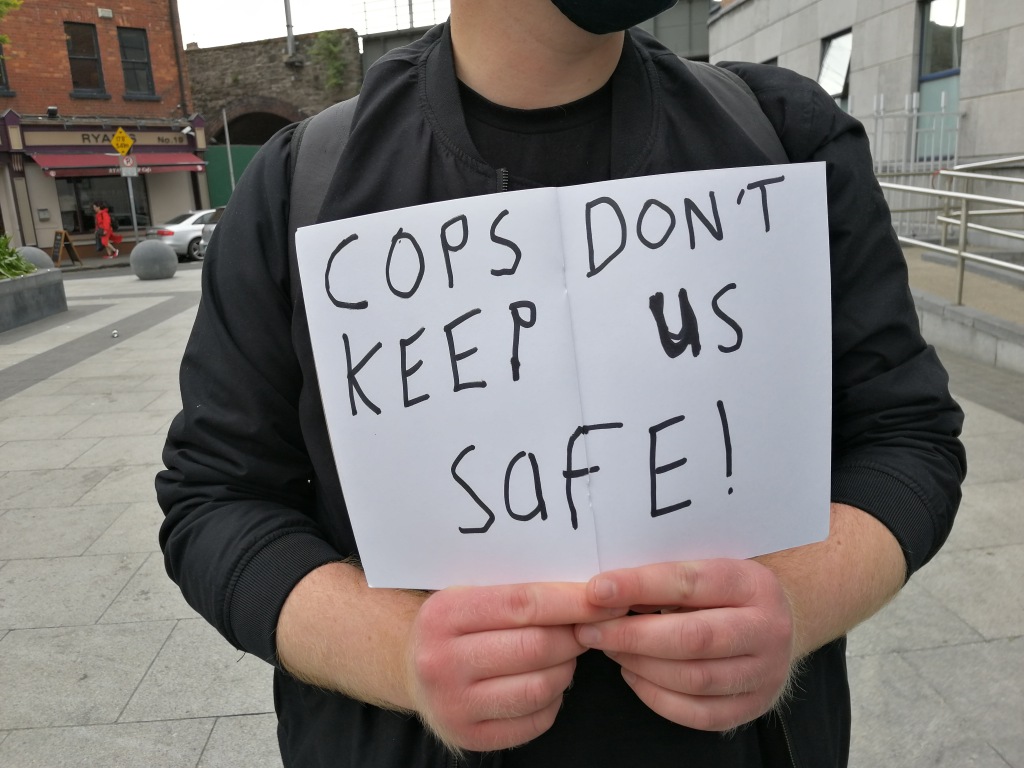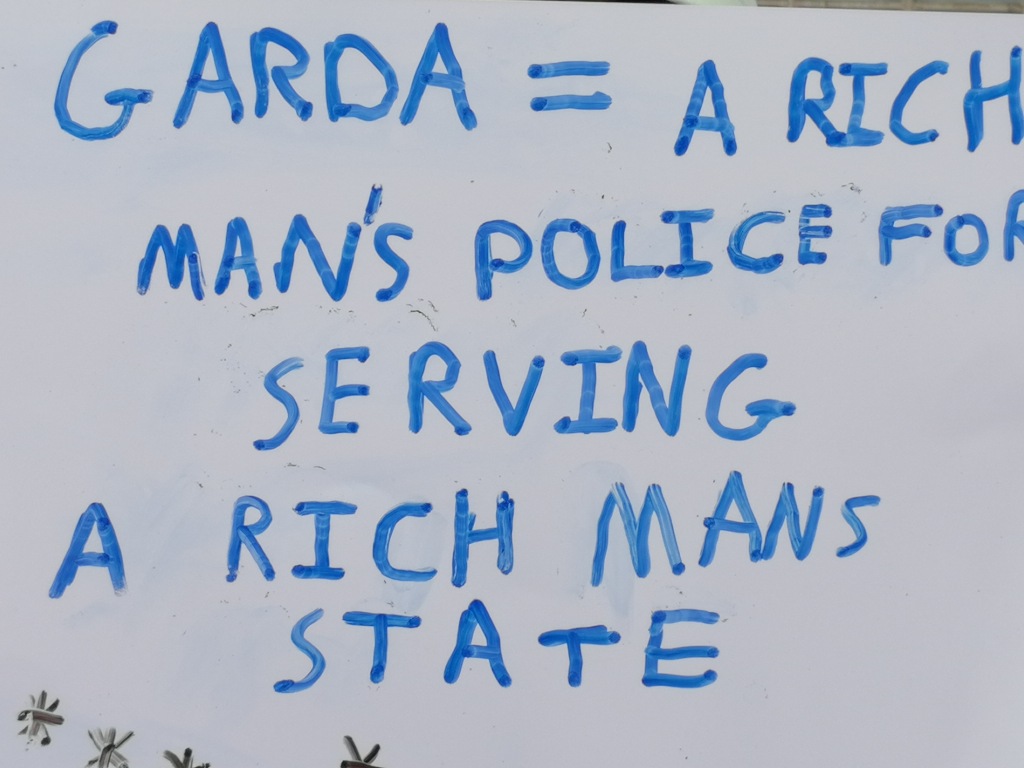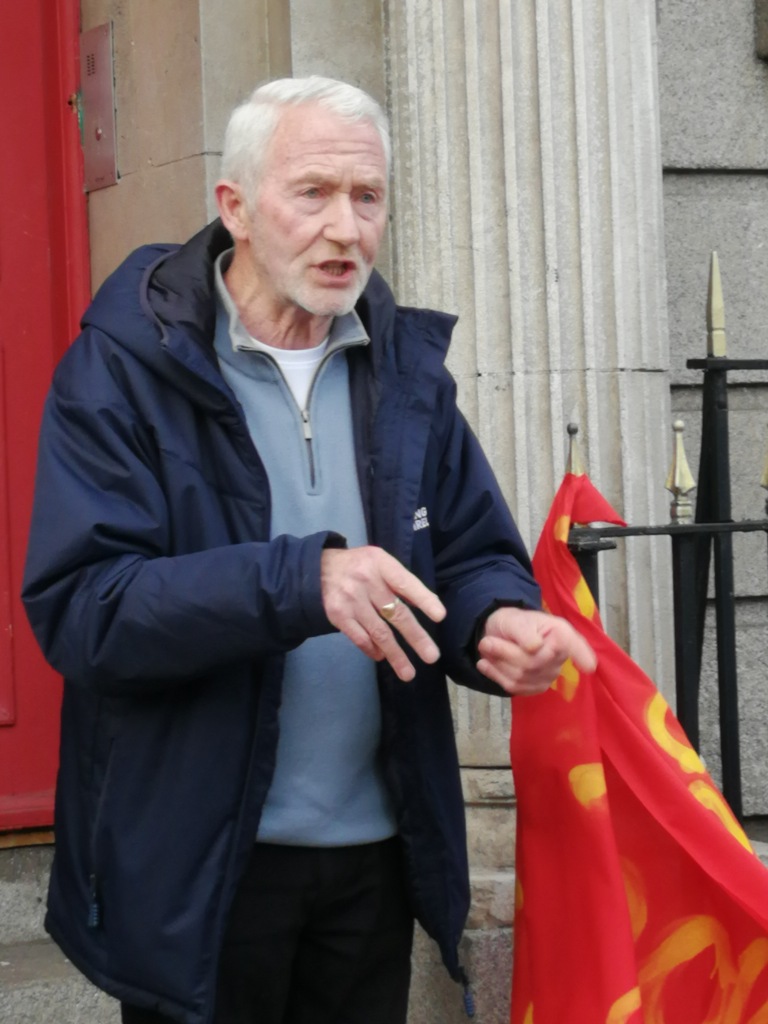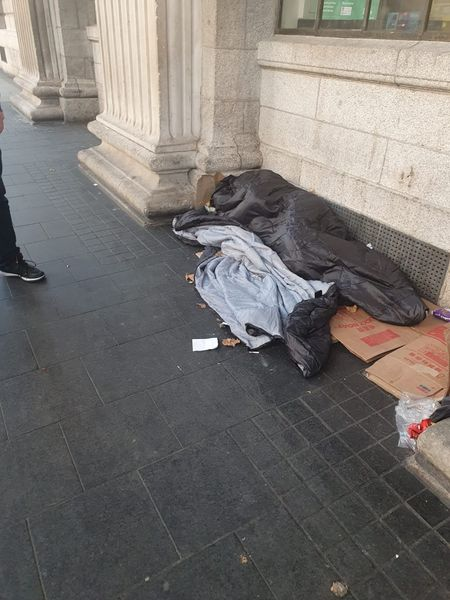Diarmuid Breatnach
(Reading time: 10 mins.)
Irish media on Thursday 9th reported that the authorities removed the tents of refugees and asylum-seekers from along the banks of the Grand Canal. These had set up there after being removed from the vicinity of the IPO1. Where could they go?
Apparently they are dispersed to Newmount Kennedy (where we’ve seen – if not fascist mobs, certainly mobs containing some fascists), Dundrum, Crooksling and City West. Hopefully they will get a roof, showers and food, though thrown out to outskirts without any plan of integration.
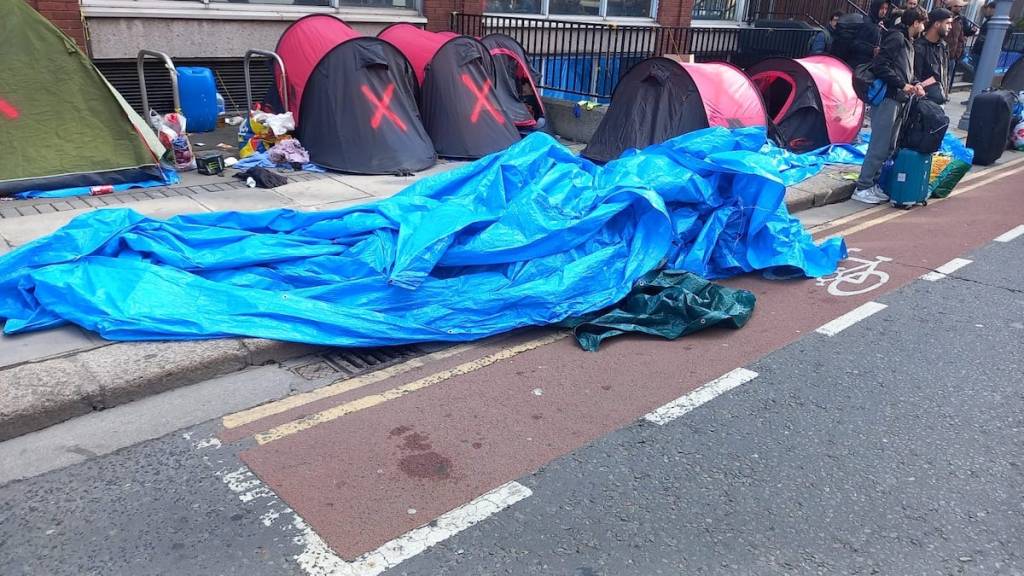
In the four months since January a thousand have applied to the International Protection Office. They get issued with a Temporary Residence Card2 (known as the “Blue book”) and not much else; if they lose that documentation (e.g during eviction) they are in trouble.
Photo ID is issued to them when they make their application for asylum at IPO. Finger prints are taken, statements recorded etc. All evidence is cross-checked with relevant authorities including Interpol. Hence, the notion that men are “unvetted” or “undocumented” is inaccurate.
They are told there is no accommodation available which is why they end up in tents, since clearly they cannot afford to rent, much less take out a mortgage to buy a property. But Róisín McAleer of Social Rights Ireland questions whether the IPO have been telling applicants the truth.
“We’ve got video showing empty beds inside Direct Provision Centres at City West and Dundrum” the activist says. The IPO admits that they have 5,000 empty beds but says that they have to keep those empty beds available in case they have to cater for women and children.
The response of the Irish Government has been to blame the refugees and remove their tents from their locations, while simultaneously funding NGOs who have recently supplied them with identical-type tents and “may provide access to meals, access to showers during the day.”3
“Taoiseach Simon Harris said that neither he, nor the Government, would accept tented encampments in the city” and “hundreds of tents were destroyed when two encampments were removed … in the capital in multi agency operations in the past week.”4
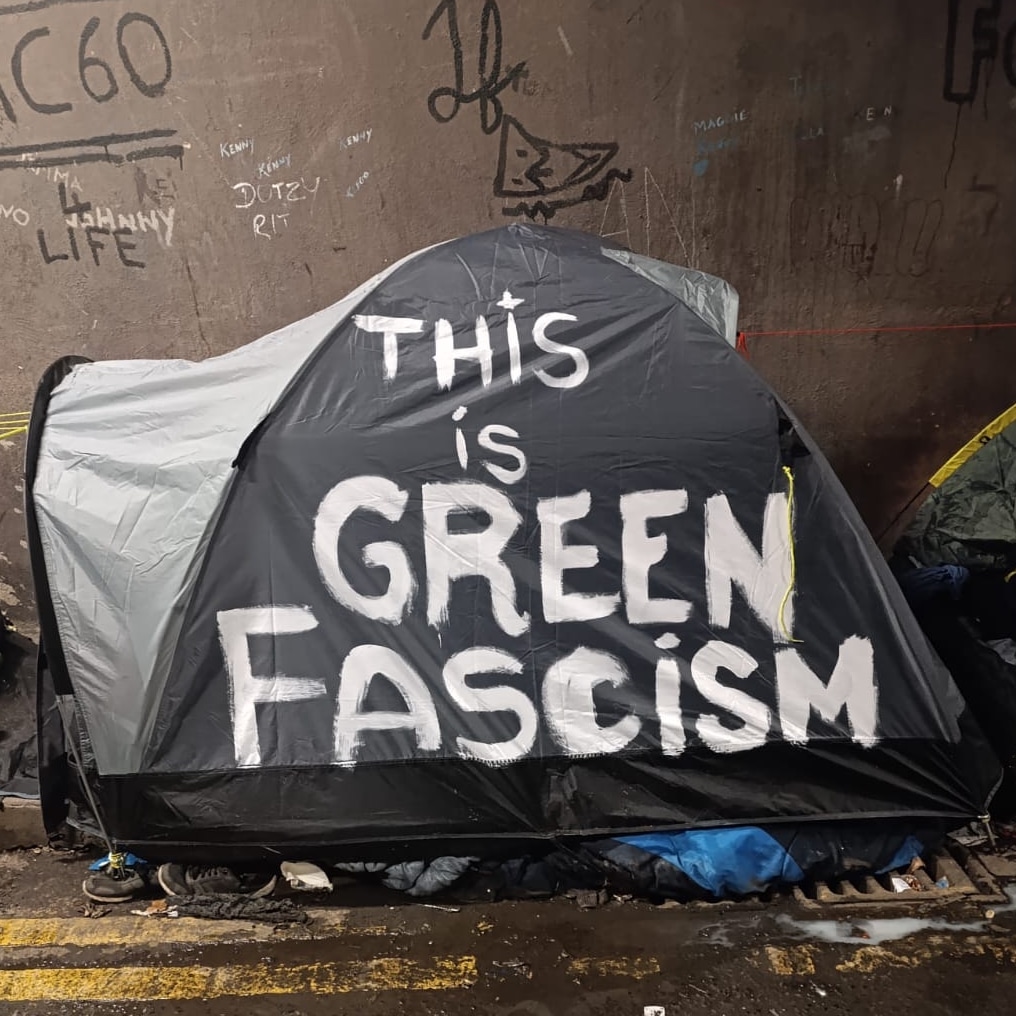
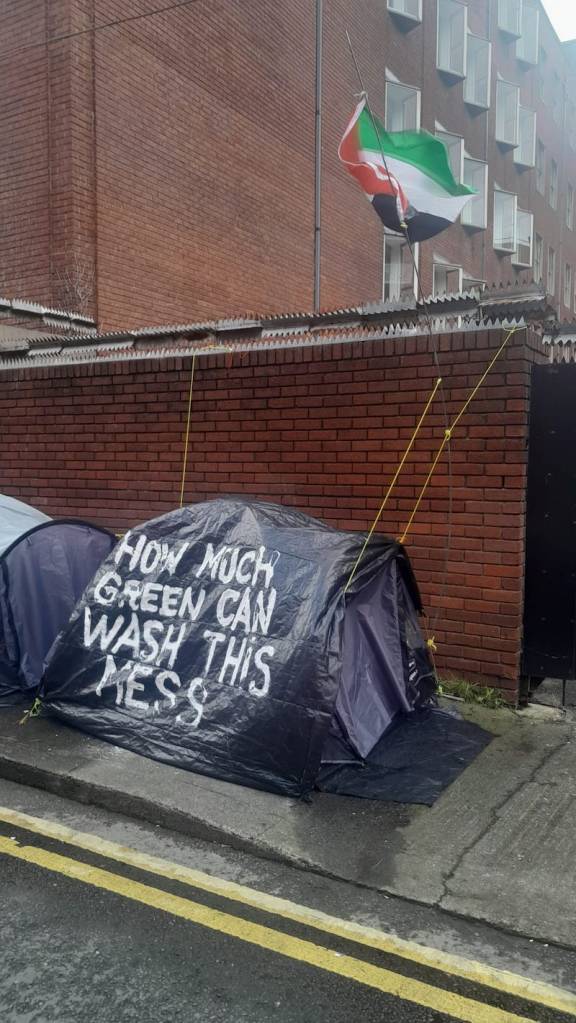
A common line in discourse is that the refugees and asylum-seekers are “undocumented” apart from whatever documentation they are issued here, which they often are, of course.
What documentation would one expect to have when fleeing war, persecution or natural disaster, always on the move, crossing mountains, deserts, rivers, seas, national boundaries?
In some places, the ‘wrong’ documentation can get you killed, marking you as the ‘wrong’ religion, nationality, tribal group … Thousands of us emigrated undocumented too and what’s more, worked undocumented as well.
Yet Helen McEntee, Justice Minister of this Government, who will never have had anything like the experiences of refugees and asylum seekers, throws around the “undocumented” word, straight from the playbook of the Far-Right, whipping up fears, hinting at some kind of menace.
“Everyone fleeing persecution or serious harm in their own country has the right to ask for international protection. Asylum is a fundamental right and granting it to people who comply with the criteria set in the 1951 Geneva Convention relating to the status of refugees.”5
It “is an international obligation for States parties, which include EU Member States.”6 While applicants are waiting for a decision on their application for international protection, according to EU legislation the Irish State is required to supply accommodation, food and medical care.7
Róisín McAleer for Social Rights Ireland stated that the Irish Government was in breach of its EU obligations which oblige all states to provide seekers of asylum with accommodation at the point of presentation. A number of agencies have pointed out this serious breach.
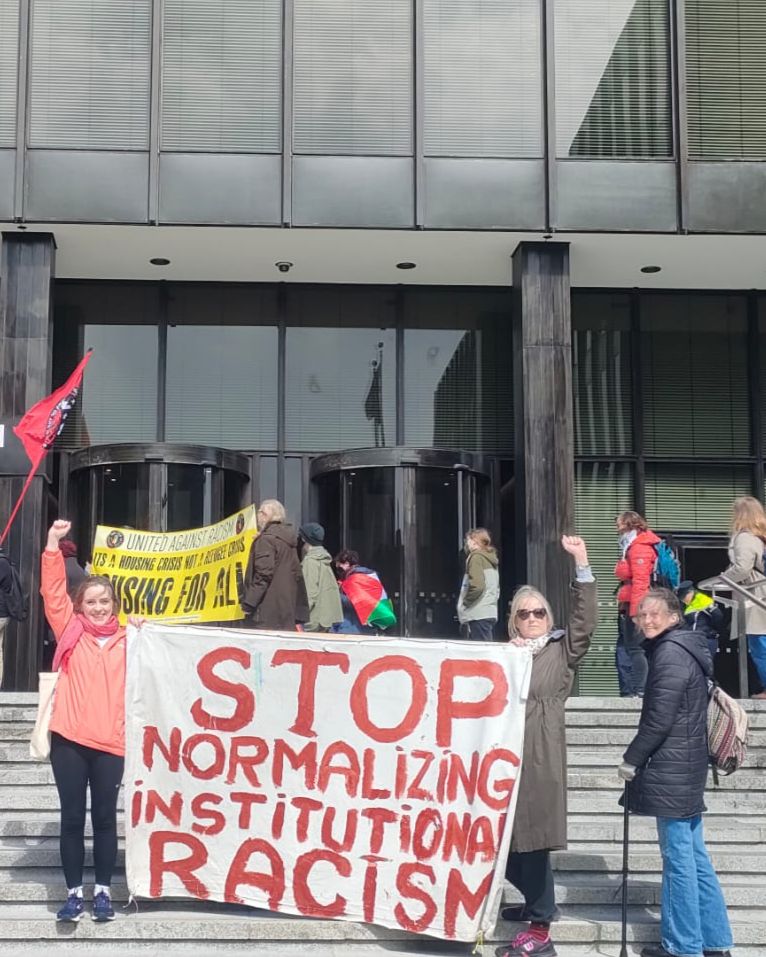
McAleer states that SRI had been trying to get solicitors to take a case against the Irish Government under EU law but had found difficulty in doing so, some saying that immigration law was not their forte. “This is a case of human rights, not immigration law,” stated the interviewee.
What about Lawyers for Palestine, have they contacted them? “Yes,” is the answer “but no reply.”
THE FAR-RIGHT’S CAMPAIGN AGAINST REFUGEES
Not only the Irish Government but the Far-Right also have been working to mobilise public opinion against these refugees and asylum seekers. And at times actually physically attacking them also, going as far as to burn an encampment area in South Dublin dockland not far from the IPO.
Masquerading as “patriots” who “want to put the Irish first”, they repeat foreign-origin racist stories and false conspiracy tales,8 spread lies, false news and misinformation. Chief among those is that “Ireland is full”, which is untrue as even a little knowledge of our history will show.
In fact, being far from “full”, Ireland is UNDER-populated. The population of the whole of Ireland in the mid 1800s was 8 million but now hovers just over 7 million.9 Do those pushing that false story care about the real facts? If they don’t, then what is their real agenda?
One of the nastiest calls to action has been to “get them out” – no, not the Government, nor the ruling Gombeen class, not the British colonial occupiers. No, not any of the justifiable targets (but which might involve risk). No, they mean refugees, asylum seekers and really any migrants at all.
And why? Who are these groups harming? Well, apparently it’s because the Government should “house the Irish first”. But … how would evicting refugees from tents, repurposed buildings or Direct Provision Centres get any Irish person housed any quicker?
It wouldn’t of course, nor be of even the slightest help to people struggling to pay high rents to landlord companies, or to pay their mortgages to banks, or about to be evicted by vulture funds.
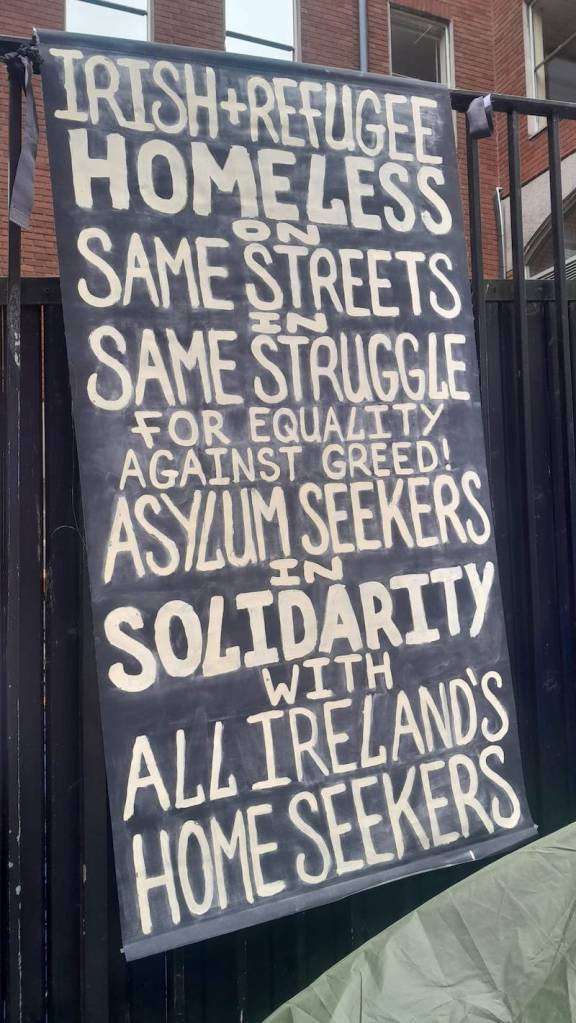
But the fascists and racists manipulating their followers don’t care, that’s not what they are there for. If they really did want to get ‘the Irish’ housed, they could occupy empty buildings to pressure the system, like the Revolutionary Housing League have been doing and calling on others to do.
No, the Far-Right prefer to torch buildings, including one in the south docklands that was earmarked for general homeless people.
Ironically, near the tents’ location a national liberation battle was fought around Mount Street Bridge in 1916 and the Commandant of that garrison was a migrant, as were many others, including two of the 1916 Proclamation’s Seven Signatories — of which another two were sons of migrants.
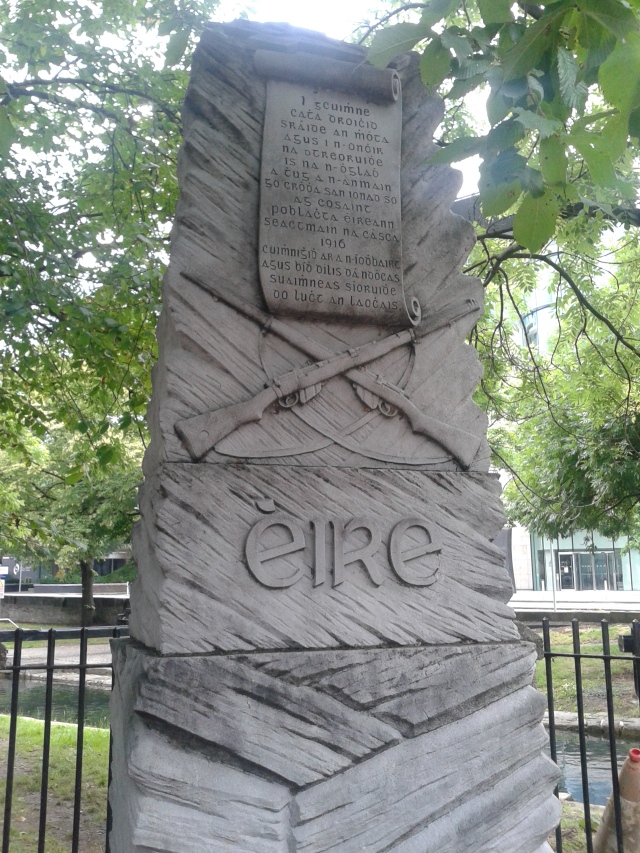
In April, according to the Department of Housing, 13,866 people were in emergency accommodation in the Irish state, including 4,147 children, with many others sleeping on the streets, others in hotel rooms, hostels or sofa-surfing with friends and relations.10
But of course, the Far-Right don’t occupy empty buildings, having no intention of taking on the powerful financial interests that are making money out of all this misery. In fact, the Far-Right are helping those parasites, by diverting attention from them on to refugees and asylum seekers.
“SINGLE, MILITARY-AGE MEN”
Yes, the men are alone, whether they left a partner and children behind to find a way out for them or indeed are single. And yes, they are “military age” – 18-45 years of age, just like most male migrants that left Ireland for work in the UK, USA, Australia, New Zealand, Canada …
That is the usual profile when the migrant is male. Because they can work and then send money back to family. And because in a risky endeavour they are generally less at risk and more willing to take the chance than females.11
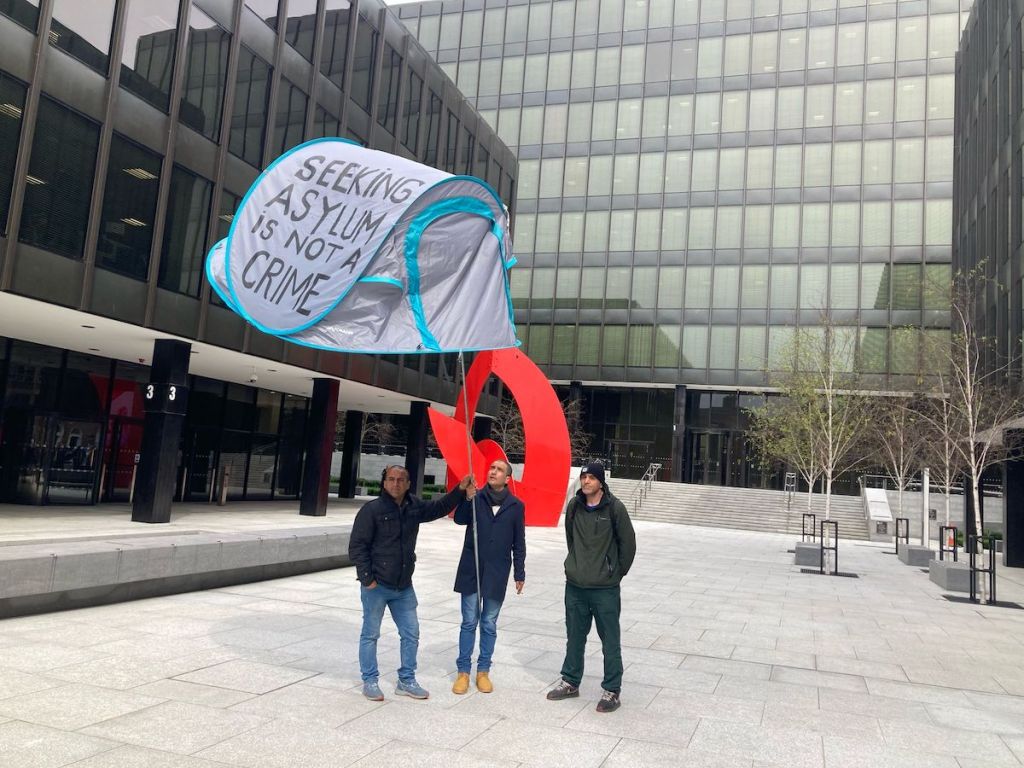
But we never used that kind of description of our own emigrants, did we? We just said “young men” mostly. Where did that terminology come from, with its implied threat? From the USA, the hatchery of most Far-Right religious fundamentalism, conspiracy and racist theories and memes.12
We do have our own home-grown fascists of course with quite a high concentration of them among the Loyalists in the Six County colony. But also a few small crews this side of the British Border, well-linked to Loyalists and British fascists like Tommy “Robinson” and Nigel Farage.
The threat of sexual attack from foreigners is a version of that US fear propaganda, especially fear of black rape of white women — which is ironic since it was white slavers, slave-owners and plantation managers who raped black slaves and their children.
If we go through the media reports of court cases concerning rape, sexual assault and child sexual abuse, we find that by and large it’s the “indigenous Irish” who are the culprits. A minority of the population of course but Irish nevertheless.
How do volunteers working with the tent-living refugees experience them? “Respectful …. grateful” says one volunteer. “Quiet …. modest” is another description. “Some have high hopes of the values of western society but find themselves in shock and incomprehension at some of their treatment.”
Where have they come from? “Mostly Nigeria, Afghanistan, Jordan, Syria, Palestine …” Interestingly from an Irish point of view, all countries that the British have invaded at one time or another.
What causes waves of emigration from one area of the world and immigration to another? High on the list of causes are domestic unemployment, wars and natural disasters. Irish people have left Ireland pushed by all those factors.
Wars of occupation and ethnic cleansing, i.e plantations by England along with domestic resistance have sent Irish people outward from the 17th century onwards. In the mid-19th Century the natural disaster of the potato blight amongst imposed impoverishment flung out millions of migrants.
Throughout most of the decades of the Irish State’s existence, unemployment was the main driving force of emigration, so much so that until the years of the “Tiger economy”,13 Ireland remained underpopulated but with stable population figures despite a high birth and survival rate.
The factors that drive migrants to our shores are no different. When it comes to foreign wars of imperialism however, ironically the Far-Right deride socialist Republicans and socialists for protesting against those wars, going so far as to call them “traitors” for doing so.
When people are neglected, they often resent any focus on others. “What about me?” is their cry, whether voiced out loud or not. There is no doubt that many communities in Ireland have suffered government neglect, even been devastated by substance misuse and social crime.
Resolution of those social problems can only come about through organising against the culpable authorities and their pandering to the banks, property speculators and big landlords who benefit from the current situation – never by “punching down” on even more vulnerable people.
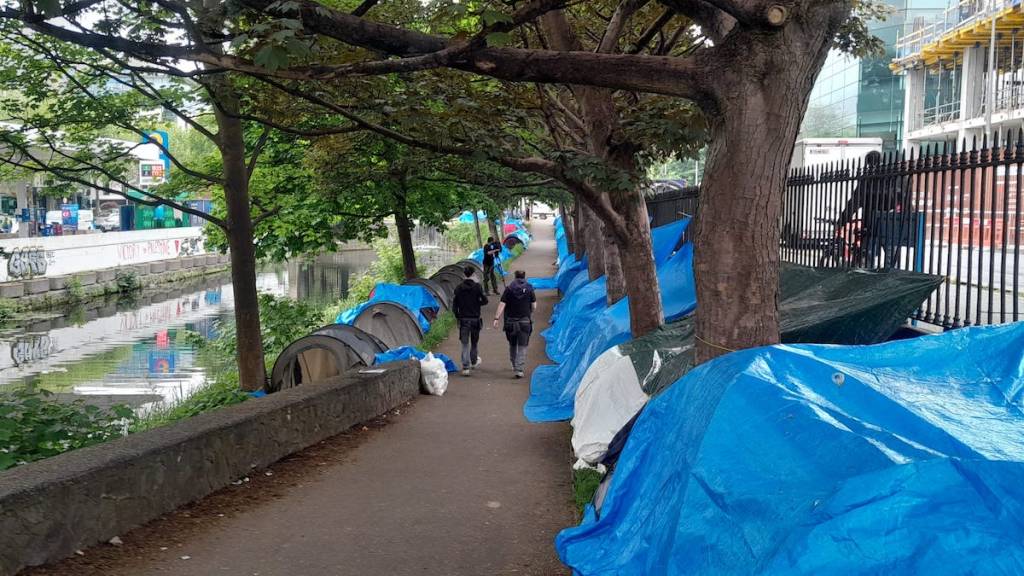
LIKE US
I called this article “emigrants and refugees like us” to make a number of points. One is that we too have been emigrants and refugees for centuries (and many still are). We went to Britain for seasonal work in the harvests and later for work on canals, roads and in factories.
We went to the USA too, Canada, Australia, New Zealand …
That’s about economic emigration. But we went as refugees too, fleeing religious and political persecution, fleeing ethnic cleansing, genocide and famine. Gaelic clans found asylum in Spain, Italy, France, Austria … Republicans found asylum in France and the USA …
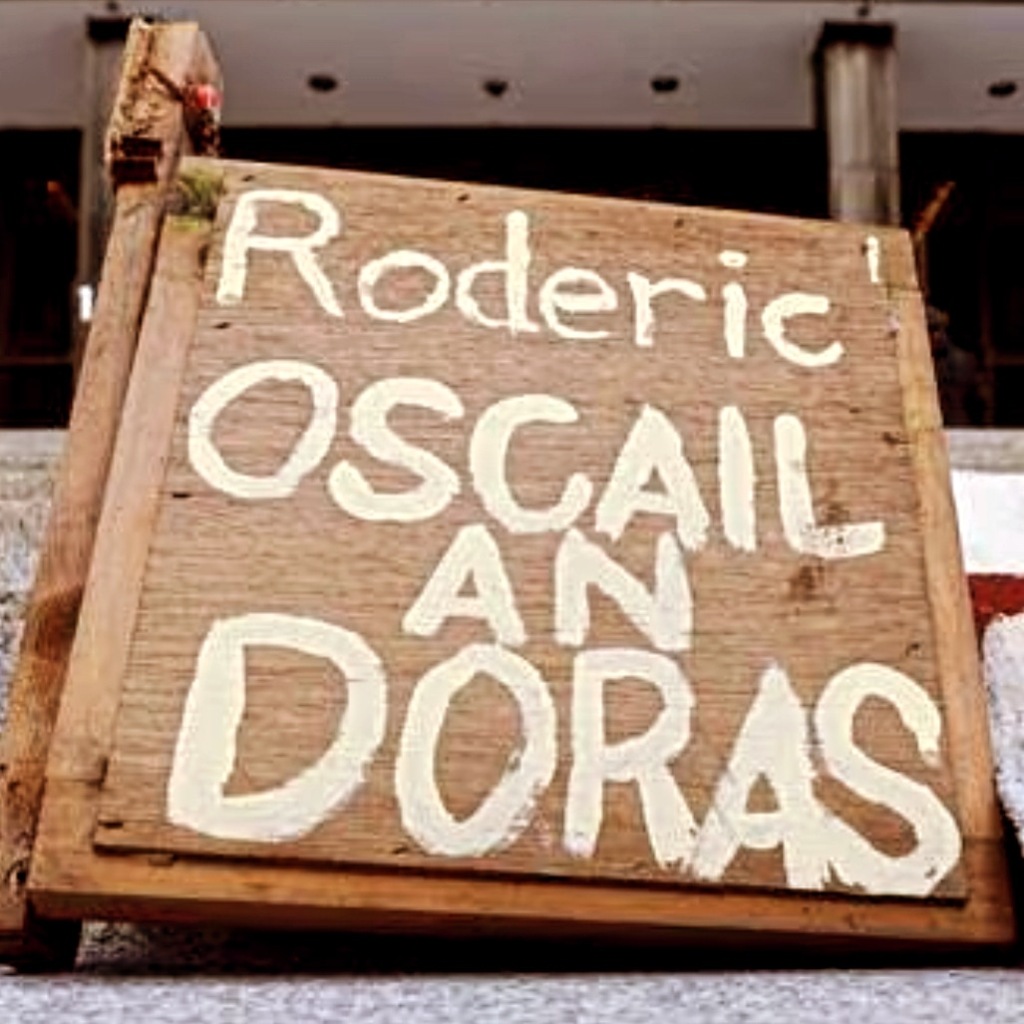
It wasn’t always easy. We faced racism, yes real anti-Irish racism14, slurs that we were dangerous, dirty, carrying disease, taking jobs of locals … And we had the cheek to organise ourselves and to make alliances with a number of other discriminated-against groups to win some power!
We fought racists like the “Know Nothings” and the Ku Kux Klan,15 Blackshirts and National Front16 on the streets. We fought rich mine, factory and railroad-owners, formed trade unions and associations and we were clubbed, shot, jailed and executed. And we clubbed and shot back too.17
There’s another reason I called this article “emigrants and refugees like us”: We are ALL descended from migrants or refugees. The Irish nation is composed, apart from the “native Irish”, of Viking, Norman, Scottish, English, Flemish, Dutch and Italian blood (remember, fish and chip shops, ice cream and cafés) before others came from further away.
And the “native indigenous Irish”? The Celts? Yes, migrants too, from central Europe, with iron tools and weapons. Before them? The bronze-metal people. And before them again? The Neolithic people who built the likes of Newgrange, Knowth and Dowth in the Boyne Valley.
The human race did not evolve in Ireland. We are all descended from migrants.
The third reason I called this article “emigrants and refugees like us” is because, like us, they are human. The feel hunger and fear just like we do. They need safety and warmth just like we do. If we deny them those things we diminish our own humanity in doing so.
That might seem a bit wishy-washy but to me, our humanity in its best sense is worth everything and if need be, it’s worth fighting for.
End.
FOOTNOTES
1 International Protection Agency, the Irish State’s agency with responsibility for processing refugees and people seeking asylum in the state.
2 This is photo ID issued to them when they make their application for asylum at IPO. Fingerprints are taken, statements recorded etc. All evidence is cross-checked with relevant authorities including Interpol. Hence, the notion that men are “unvetted” or “undocumented” is inaccurate.
3 https://www.breakingnews.ie/ireland/government-paying-for-tents-provided-to-asylum-seekers-says-ogorman-1624336.html
4 Ditto.
5 https://www.europarl.europa.eu/about-parliament/en/democracy-and-human-rights/fundamental-rights-in-the-eu/guaranteeing-the-right-to-asylum
6 Ditto.
7 https://www.citizensinformation.ie/en/moving-country/asylum-seekers-and-refugees/the-asylum-process-in-ireland/international-protection-terms
8 Such as the “white replacement” conspiracy theory from settler colonies like South Africa and Rhodesia, then via white supremacist groups in the USA and through social media to Ireland.
9 https://en.wikipedia.org/wiki/Ireland
10 https://www.irishtimes.com/ireland/social-affairs/2024/04/26/number-of-people-in-emergency-accommodation-reaches-new-high-of-13866-including-over-4000-children
11 https://reason.com/volokh/2024/05/03/migration-and-the-military-age-male-fallacy/#:~:text=The%20definition%20of%20%22military%2Dage,disproportionately%20drawn%20from%20this%20category.
12 This has been known for years but a recent study of social media protests against a propose housing of migants in Newmount Kennedy Co. Wicklow found the source of around 80% to originate outside Ireland with more than half being from the USA. https://www.independent.ie/irish-news/more-than-half-of-social-media-posts-about-wicklow-anti-asylum-protest-were-from-us-analysis-finds/a1068312180.html
13 1995 to 2007
14 Not the rubbish “racism” of which the Far-Right claim they are the “victims” whenever anyone calls out their racism or homophobia.
15 The “Know Nothings” were mostly white, Anglo-Saxon and Protestant settled nativists in the USA who organised against other European migrants such as the Irish and when brought to court for murder or riot, they would claim to “know nothing”. The Ku Klux Klan was set up primarily to suppress freed slaves and other black people in the USA but they also organised against the Irish. British fascist groups: Blackshirts (British Union of Fascists) in the 1930s and after WW2 and National Front in the 1960s and 1970s, later replaced by the British Movement.
16 Both British fascist organisations: the first from the 1930s and resurrected after WWII for a period; the second from the 1960s, later superseded by others (British Movement, EDL etc).
17 Not just in the Molly Maguires but also in the IWW and the Knights of Labor.
SOURCES & FURTHER READING
The “single military age male” propaganda: https://reason.com/volokh/2024/05/03/migration-and-the-military-age-male fallacy
US origin of much racist social media posts: https://www.independent.ie/irish-news/more-than-half-of-social-media-posts-about-wicklow-anti-asylum-protest-were-from-us-analysis-finds/a1068312180.html
Eviction of refugees and asylum-seekers: https://www.breakingnews.ie/ireland/government-paying-for-tents-provided-to-asylum-seekers-says-ogorman-1624336.html
Súil Chlé video about Asylum Seekers Abandoned on the street: https://www.youtube.com/watch?v=dSl_bbGTUUc
SRI video on Rough Reception of Asylum Seekers in the Irish state: https://youtu.be/uOYT9CtjU90?si=gCanAaimLvmbcc0f

